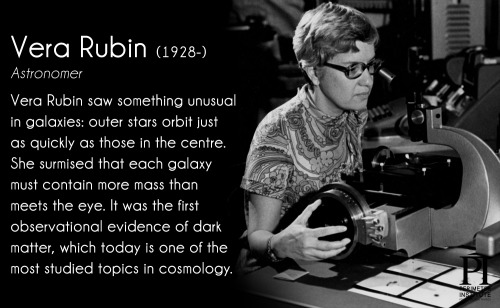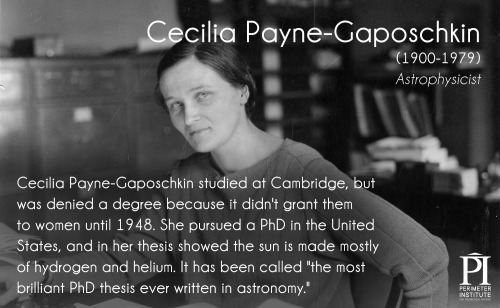Alloys: Steel
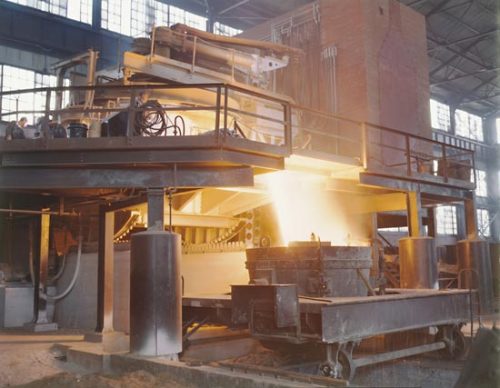
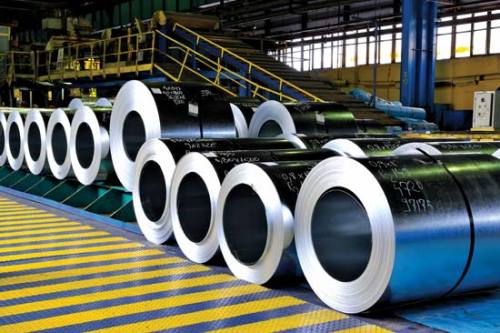


Alloys: Steel
According to Dictionary.com, steel is “any of various modified forms of iron, artificially produced, having a carbon content less than that of pig iron and more than that of wrought iron, and having qualities of hardness, elasticity, and strength varying according to composition and heat treatment: generally categorized as having a high, medium, or low-carbon content”.
Perhaps the most well known alloy around, as well as one of the most common materials in the world, steel is essentially iron with a small percentage of carbon (and, on occasion, one or more other elements). Not enough carbon and you’re stuck with wrought iron, too much carbon and you get cast iron. The graph above is a binary iron-carbon phase diagram that goes from zero percent carbon to about 6.5 percent, illustrating the various phases that can form.
Steel has been known about since ancient times, some pieces dating back to 1800 BC, but it was the invention of the Bessemer process during the industrial revolution that really popularized the alloy. (Technically, similar methods had been used before, particularly in China and Japan, but Henry Bessemer invented the modern method, industrializing it and obtaining a patent in 1856.)
Mainly used in construction, the alloy has been used for almost every possible application: from office furniture to steel wool, from bulldozers to washing machines, and from wires to watches, the possibilities are pretty much endless. Steel is also one of the world’s most-recycled materials, able to be used more than once, with a recycling rate of over 60% globally.
The addition of carbon allows the steel to be stronger than the iron it’s made from. Adding nickel and manganese increases its tensile strength, chromium increases hardness and melting temperature, and vanadium also increases hardness while making it less prone to metal fatigue. Stainless steel has at least eleven percent chromium, whereas Hadfield steel (which resists wearing) contains twelve to fourteen percent manganese. Check out these links for more information on the effects of adding certain elements.
Sources: 1 (top images), 2 (bottom images)
More Posts from T-sci-eng and Others




Concrete vs. Cement
Concrete and cement are (mostly) two different materials. Why mostly? Because concrete is made using cement. Though cement can (technically) be used on its own, concrete cannot be made without first making cement.
Classified as a ceramic, cement starts as a powder, a mixture of limestone and other minerals, which is heated and mixed with gypsum to form what we know of as cement. Still a powder in this form, once water is added and mixed the cement then hardens.
Portland cement, probably the most well known and commonly used cement, is classified as a hydraulic cement. This essentially means that once water has been added the chemical reaction, called hydration, that hardens the cement is not dependent on how much water is added. Hydraulic cements can harden underwater and remain strong even in wet conditions. As a side note, Portland cement is not a brand name, but a particular type of cement.
On the other hand, concrete is composed of cement, aggregate, and water, and is thus classified as a composite. Composites are defined as consisting of a matrix or binder that has a reinforcement within it. In the case of concrete, the cement water mixture is the matrix in which the reinforcement, or aggregate exists.
The aggregate is typically comprised of stones, rocks, and sand and its addition increases the durability of the concrete. The amount of the aggregate or the size of the aggregate added can also effect the water-to-cement ratio required to harden the material, strengthening the final product. The hardening process continues for years, meaning that concrete only gets stronger with age.
Though most concretes are lime-based, asphalt concrete uses asphalt as the cement material and polymer concretes also exist. Another common type of concrete is reinforced concrete, in which rebar, or reinforcing bars, are embedded within to add to the strength of the concrete.
Sources: ( 1 ) ( 2 ) ( 3 ) ( 4 ) ( 5 )
How platinum powers the world

Platinum bars. Image: Sprott Money@Flickr
Platinum is one of the most valuable metals in the world. Precious and pretty, it’s probably best known for jewelry – and that is almost certainly its oldest use. But its value has become far greater than its decorative ability; today, platinum powers the world. From agriculture to the oil markets, energy to healthcare, we use platinum far more than we realise.
1. Keep the car running

Platinum is needed to make fuel for transport. Image: Pixabay
Platinum catalysts are crucial in the process that converts naphtha into petrol, diesel, and jet-engine fuel, which are all vital to the global economy. The emissions from those petroleum fuels, however, can be toxic, and platinum is also crucial in the worldwide push to reduce them through automotive catalytic converters. In fact, 2% of global platinum use in 2016 was in converting petroleum and 41% went into reducing emissions – a circle of platinum use that’s more impressive than a ring.
2. Feed the world

Nitric acid is a by-product of platinum which is used in fertilisers. Image: Pixabay
Another vital global sector that makes use of platinum catalysts is agriculture. Without synthetic fertilisers, we would not be able to produce nearly as much food as we need. Nitric acid is essential for producing those fertilisers and platinum is essential for producing nitric acid. Since 90% of the gauzes required for nitric acid are platinum, we may need to use more of it as we try to meet the global food challenge.
3. Good for your health

A pacemaker. Image: Steven Fruitsmaak@Wikimedia Commons
Platinum is extremely hard wearing, non-corrosive, and highly biocompatible, making it an excellent material to protect medical implants from acid corrosion in the human body. It is commonly used in pacemakers and stents. It is also used in chemotherapy, where platinum-based chemotherapeutic agents are used to treat up to 50% of cancer patients.
Keep reading

The simple physics behind a Fidget Spinner
When you want something to spin for a really long time you need to make sure that the friction does not slow it down.

And we can do this by adopting ball bearings. This is so because friction offered due to rolling is much smaller than due to sliding.

And many Fidget spinners indeed use ceramic ball bearings to keep them spinning for a long time. **
Mass Distribution
The next most crucial component is the Angular Momentum. Angular momentum is equal to the product of rotational velocity and the moment of inertia.

And by distributing more mass towards the edge, the fidget spinner gains high moment of inertia keeping it spinning longer.
That’s why the spinners have that weird peculiar shape.
But, Why do they feel alive ?

The angular momentum of a fidget spinner happens to point outwards from the spinner’s center.
And so to change the direction of the momentum — rotating the spinner with your fingers — you must apply a force. You push on the spinner, and the spinner pushes back on you.
That’s why a fidget spinner feels like it fights you, like it’s alive.
- Nerdist
A very fascinating toy nevertheless!
** Spin Test : Ceramic Vs Steel ball bearings
*** Fidget spinner trick shots
Physical Science...In Space!
Each month, we highlight a different research topic on the International Space Station. In May, our focus is physical science.

The space station is a laboratory unlike any on Earth; on-board, we can control gravity as a variable and even remove it entirely from the equation. Removing gravity reveals fundamental aspects of physics hidden by force-dependent phenomena such as buoyancy-driven convection and sedimentation.

Gravity often masks or distorts subtle forces such as surface tension and diffusion; on space station, these forces have been harnessed for a wide variety of physical science applications (combustion, fluids, colloids, surface wetting, boiling, convection, materials processing, etc).

Other examples of observations in space include boiling in which bubbles do not rise, colloidal systems containing crystalline structures unlike any seen on Earth and spherical flames burning around fuel droplets. Also observed was a uniform dispersion of tin particles in a liquid melt, instead of rising to the top as would happen in Earth’s gravity.

So what? By understanding the fundamentals of combustion and surface tension, we may make more efficient combustion engines; better portable medical diagnostics; stronger, lighter alloys; medicines with longer shelf-life, and buildings that are more resistant to earthquakes.

Findings from physical science research on station may improve the understanding of material properties. This information could potentially revolutionize development of new and improved products for use in everything from automobiles to airplanes to spacecraft.
For more information on space station research, follow @ISS_Research on Twitter!
Make sure to follow us on Tumblr for your regular dose of space: http://nasa.tumblr.com
On Monday, the Onion reported that the “Nation’s math teachers introduce 27 new trig functions”. It’s a funny read. The gamsin, negtan, and cosvnx from the Onion article are fictional, but the piece has a kernel of truth: there are 10 secret trig functions you’ve never heard of, and they have delightful names like ‘haversine’ and ‘exsecant’.
Solar System: Things to Know This Week
Reaching out into space yields benefits on Earth. Many of these have practical applications — but there’s something more than that. Call it inspiration, perhaps, what photographer Ansel Adams referred to as nature’s “endless prospect of magic and wonder.“
Our ongoing exploration of the solar system has yielded more than a few magical images. Why not keep some of them close by to inspire your own explorations? This week, we offer 10 planetary photos suitable for wallpapers on your desktop or phone. Find many more in our galleries. These images were the result of audacious expeditions into deep space; as author Edward Abbey said, "May your trails be crooked, winding, lonesome, dangerous, leading to the most amazing view.”

1. Martian Selfie
This self-portrait of NASA’s Curiosity Mars rover shows the robotic geologist in the “Murray Buttes” area on lower Mount Sharp. Key features on the skyline of this panorama are the dark mesa called “M12” to the left of the rover’s mast and pale, upper Mount Sharp to the right of the mast. The top of M12 stands about 23 feet (7 meters) above the base of the sloping piles of rocks just behind Curiosity. The scene combines approximately 60 images taken by the Mars Hand Lens Imager, or MAHLI, camera at the end of the rover’s robotic arm. Most of the component images were taken on September 17, 2016.
800 x 600
1024 x 768
1280 x 1024
1600 x 1200
1280 x 800
1440 x 900
1920 x 1200

2. The Colors of Pluto
NASA’s New Horizons spacecraft captured this high-resolution, enhanced color view of Pluto on July 14, 2015. The image combines blue, red and infrared images taken by the Ralph/Multispectral Visual Imaging Camera (MVIC). Pluto’s surface sports a remarkable range of subtle colors, enhanced in this view to a rainbow of pale blues, yellows, oranges, and deep reds. Many landforms have their own distinct colors, telling a complex geological and climatological story that scientists have only just begun to decode.
800 x 600
1024 x 768
1280 x 1024
1600 x 1200
1280 x 800
1440 x 900
1920 x 1200

3. The Day the Earth Smiled
On July 19, 2013, in an event celebrated the world over, our Cassini spacecraft slipped into Saturn’s shadow and turned to image the planet, seven of its moons, its inner rings — and, in the background, our home planet, Earth. This mosaic is special as it marks the third time our home planet was imaged from the outer solar system; the second time it was imaged by Cassini from Saturn’s orbit, the first time ever that inhabitants of Earth were made aware in advance that their photo would be taken from such a great distance.
800 x 600
1024 x 768
1280 x 1024
1600 x 1200
1280 x 800
1440 x 900
1920 x 1200

4. Looking Back
Before leaving the Pluto system forever, New Horizons turned back to see Pluto backlit by the sun. The small world’s haze layer shows its blue color in this picture. The high-altitude haze is thought to be similar in nature to that seen at Saturn’s moon Titan. The source of both hazes likely involves sunlight-initiated chemical reactions of nitrogen and methane, leading to relatively small, soot-like particles called tholins. This image was generated by combining information from blue, red and near-infrared images to closely replicate the color a human eye would perceive.
800 x 600
1024 x 768
1280 x 1024
1600 x 1200
1280 x 800
1440 x 900
1920 x 1200

5. Catching Its Own Tail
A huge storm churning through the atmosphere in Saturn’s northern hemisphere overtakes itself as it encircles the planet in this true-color view from Cassini. This picture, captured on February 25, 2011, was taken about 12 weeks after the storm began, and the clouds by this time had formed a tail that wrapped around the planet. The storm is a prodigious source of radio noise, which comes from lightning deep within the planet’s atmosphere.
800 x 600
1024 x 768
1280 x 1024
1600 x 1200
1280 x 800
1440 x 900
1920 x 1200

6. The Great Red Spot
Another massive storm, this time on Jupiter, as seen in this dramatic close-up by Voyager 1 in 1979. The Great Red Spot is much larger than the entire Earth.
800 x 600
1024 x 768
1280 x 1024
1600 x 1200
1280 x 800
1440 x 900
1920 x 1200

7. More Stormy Weather
Jupiter is still just as stormy today, as seen in this recent view from NASA’s Juno spacecraft, when it soared directly over Jupiter’s south pole on February 2, 2017, from an altitude of about 62,800 miles (101,000 kilometers) above the cloud tops. From this unique vantage point we see the terminator (where day meets night) cutting across the Jovian south polar region’s restless, marbled atmosphere with the south pole itself approximately in the center of that border. This image was processed by citizen scientist John Landino. This enhanced color version highlights the bright high clouds and numerous meandering oval storms.
800 x 600
1024 x 768
1280 x 1024
1600 x 1200
1280 x 800
1440 x 900
1920 x 1200

8. X-Ray Vision
X-rays stream off the sun in this image showing observations from by our Nuclear Spectroscopic Telescope Array, or NuSTAR, overlaid on a picture taken by our Solar Dynamics Observatory (SDO). The NuSTAR data, seen in green and blue, reveal solar high-energy emission. The high-energy X-rays come from gas heated to above 3 million degrees. The red channel represents ultraviolet light captured by SDO, and shows the presence of lower-temperature material in the solar atmosphere at 1 million degrees.
800 x 600
1024 x 768
1280 x 1024
1600 x 1200
1280 x 800
1440 x 900
1920 x 1200

9. One Space Robot Photographs Another
This image from NASA’s Mars Reconnaissance Orbiter shows Victoria crater, near the equator of Mars. The crater is approximately half a mile (800 meters) in diameter. It has a distinctive scalloped shape to its rim, caused by erosion and downhill movement of crater wall material. Since January 2004, the Mars Exploration Rover Opportunity has been operating in the region where Victoria crater is found. Five days before this image was taken in October 2006, Opportunity arrived at the rim of the crater after a drive of more than over 5 miles (9 kilometers). The rover can be seen in this image, as a dot at roughly the “ten o'clock” position along the rim of the crater. (You can zoom in on the full-resolution version here.)
800 x 600
1024 x 768
1280 x 1024
1600 x 1200
1280 x 800
1440 x 900
1920 x 1200

10. Night Lights
Last, but far from least, is this remarkable new view of our home planet. Last week, we released new global maps of Earth at night, providing the clearest yet composite view of the patterns of human settlement across our planet. This composite image, one of three new full-hemisphere views, provides a view of the Americas at night from the NASA-NOAA Suomi-NPP satellite. The clouds and sun glint — added here for aesthetic effect — are derived from MODIS instrument land surface and cloud cover products.
Full Earth at night map
Americas at night
Discover more lists of 10 things to know about our solar system HERE.
Make sure to follow us on Tumblr for your regular dose of space: http://nasa.tumblr.com
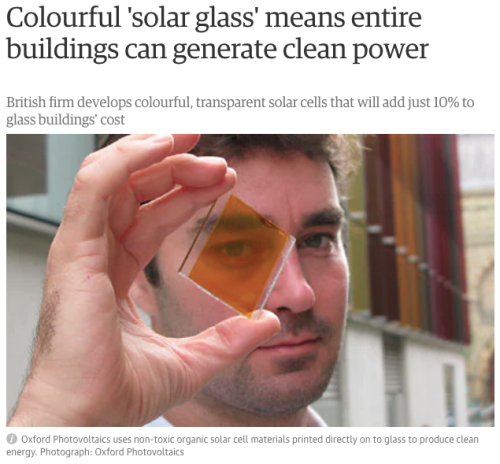


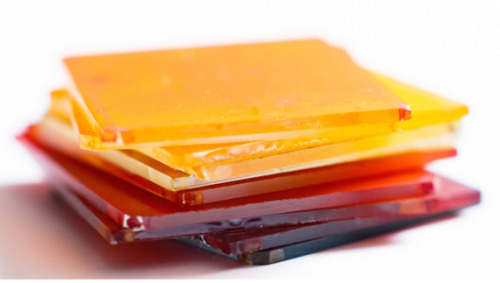
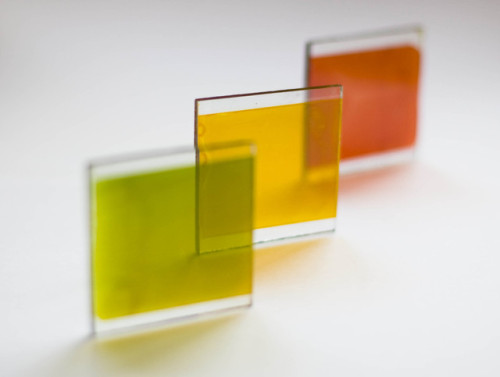

Just imagine a world full of beautiful stained glass windows which also generate electricity…
[Oxford Photovoltaics]

Behold the awesomeness that is the heart of a blue whale. This colossal organ weighs 440 pounds and was retrieved from the carcass of a whale that had washed up on the shore of Newfoundland in 2014. Despite decomposition the heart was still in such great condition that it was a perfect candidate for preservation via plastination, which is precisely what was done by mammalogy technicians at the Royal Ontario Museum in Toronto.
Head over to Wired to learn how museum scientists went about preserving this titanic ticker.
[via Wired]

I have always been fascinated by Pokemon.
Tiding through the waves of time, now that I think about it : Pokemon did teach me a lot about physics, especially electricity.
What is Electricity ?

Electricity stems from a potential difference between two areas, which allows for electromotive force to ensue in mobile electrons.
Bio-electricity

In biological cells, a voltage imbalance or a cell potential difference exists between the inside and outside of a a cell.
The cell achieves this by removing 3 sodium ions for every 2 potassium ions allows into the system. The removing process consumes energy ( ATP ).

The sodium ions leaving the cell

The Potassium ions entering the cell
Source Video
Pikachu and Bioelectrogenesis
Where does pikachu gets it’s electrical powers ?

Its by a process known as bioelectrogenesis.
Bioelectrogenesis is the generation of electricity by living organisms
How it works is rather blunt. Remember I told you that the cells are maintained in a potential difference.
There are passageways /electrolytes that are present that allows a flow of ions through them.

Ion Passageways
When required, the brain of the pikachu sends a signal through the nervous system to these electrolytes, opening ions channels and reversing charge polarity, causing an abrupt difference in electric potential.
The final effect is the generation of electric current, capable of going up to 100,000 Volts during its thunderbolt move.
Result : Opponent stupefied.

Water is better conductor than air
Most of animals that bioelectrogenic in nature are aquatic creatures ( electric eels, rays, cattlefish, etc ) . This is because water is a much better electrical conductor than air, therefore electrical signals signals can be transmitted through water.
This betters the chance for the organism to protect itself against predators. Pikachu is not aquatic because probably the writes didn’t want it be so - Poetic License ;P
More:
Some other pokemons that were also bioelectrogenic were: Eelektrik and the Eelektross

The voice of Pikachu - must watch
Electrogenic Humans
The one that ash has is a male pikachu. There is a female to the species as well. ( Look at the tail )

That’s pokemon physics for you folks.
Hope you enjoyed reading this post as much i did drafting it. Oh boy! There is physics just in about everything !
-
 injuredcyclist liked this · 2 years ago
injuredcyclist liked this · 2 years ago -
 p41nkiller liked this · 2 years ago
p41nkiller liked this · 2 years ago -
 jmand liked this · 2 years ago
jmand liked this · 2 years ago -
 generouslynoisypainter liked this · 2 years ago
generouslynoisypainter liked this · 2 years ago -
 juanelas reblogged this · 2 years ago
juanelas reblogged this · 2 years ago -
 poemaesset liked this · 2 years ago
poemaesset liked this · 2 years ago -
 totallyllatot liked this · 2 years ago
totallyllatot liked this · 2 years ago -
 fioriperme reblogged this · 2 years ago
fioriperme reblogged this · 2 years ago -
 fioriperme liked this · 2 years ago
fioriperme liked this · 2 years ago -
 electronicosmos15 liked this · 2 years ago
electronicosmos15 liked this · 2 years ago -
 nerva-xe liked this · 2 years ago
nerva-xe liked this · 2 years ago -
 you-stand-corrected reblogged this · 2 years ago
you-stand-corrected reblogged this · 2 years ago -
 you-stand-corrected liked this · 2 years ago
you-stand-corrected liked this · 2 years ago -
 tachiiniinishli liked this · 2 years ago
tachiiniinishli liked this · 2 years ago -
 winterphile reblogged this · 2 years ago
winterphile reblogged this · 2 years ago -
 winterphile liked this · 2 years ago
winterphile liked this · 2 years ago -
 firstsciencepoemcop liked this · 2 years ago
firstsciencepoemcop liked this · 2 years ago -
 youhavenoidea1379 liked this · 2 years ago
youhavenoidea1379 liked this · 2 years ago -
 skylobster reblogged this · 2 years ago
skylobster reblogged this · 2 years ago -
 dataanalyzer liked this · 2 years ago
dataanalyzer liked this · 2 years ago -
 stuff-that-irks-me reblogged this · 2 years ago
stuff-that-irks-me reblogged this · 2 years ago -
 studentofthecosmos reblogged this · 2 years ago
studentofthecosmos reblogged this · 2 years ago -
 elemmirekirk5031 liked this · 2 years ago
elemmirekirk5031 liked this · 2 years ago -
 swordsagedachsie reblogged this · 2 years ago
swordsagedachsie reblogged this · 2 years ago -
 swordsagedachsie liked this · 2 years ago
swordsagedachsie liked this · 2 years ago -
 spiritmen01 liked this · 2 years ago
spiritmen01 liked this · 2 years ago -
 thebigjsh liked this · 2 years ago
thebigjsh liked this · 2 years ago -
 materialsscienceandengineering reblogged this · 2 years ago
materialsscienceandengineering reblogged this · 2 years ago -
 nurgletwh reblogged this · 6 years ago
nurgletwh reblogged this · 6 years ago -
 nurgletwh liked this · 6 years ago
nurgletwh liked this · 6 years ago -
 t-archnstruct reblogged this · 7 years ago
t-archnstruct reblogged this · 7 years ago -
 t-sci-eng reblogged this · 7 years ago
t-sci-eng reblogged this · 7 years ago -
 logicallyhalfvulcan-blog reblogged this · 8 years ago
logicallyhalfvulcan-blog reblogged this · 8 years ago -
 jwchapman13 reblogged this · 8 years ago
jwchapman13 reblogged this · 8 years ago -
 jwchapman13 liked this · 8 years ago
jwchapman13 liked this · 8 years ago -
 sciencenerd4-blog liked this · 8 years ago
sciencenerd4-blog liked this · 8 years ago -
 bioargent reblogged this · 8 years ago
bioargent reblogged this · 8 years ago -
 daxiaer liked this · 8 years ago
daxiaer liked this · 8 years ago -
 askprosecutie liked this · 8 years ago
askprosecutie liked this · 8 years ago -
 robbie-cope reblogged this · 8 years ago
robbie-cope reblogged this · 8 years ago

